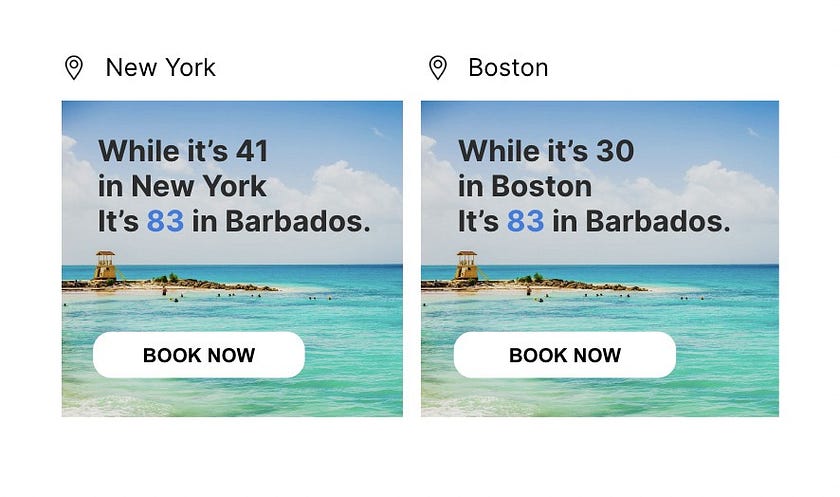Unlocking the Power of Dynamic Creative Optimization (DCO) in Digital Advertising

In today’s fast-moving digital landscape, grabbing and holding customer attention is more challenging than ever. With the overwhelming number of ads people encounter daily, relevance and personalization have become critical for success. That’s where Dynamic Creative Optimization (DCO) steps in — a powerful strategy that helps brands deliver tailored ads to the right person at the right time. But what exactly is DCO, and why is it becoming a game-changer in digital marketing?
Let’s dive in.
What is Dynamic Creative Optimization (DCO)?
Dynamic Creative Optimization is a form of programmatic advertising that automatically delivers personalized ad creatives based on real-time data. Instead of showing a generic ad to every user, DCO uses algorithms to create custom combinations of text, images, videos, and call-to-actions (CTAs) depending on who’s viewing the ad.
Think of DCO as a digital chameleon. It adapts to its environment (in this case, the viewer’s preferences, location, behavior, device, etc.) and changes its appearance (the ad creative) accordingly.
Why Traditional Creatives Are Not Enough
In traditional digital campaigns, advertisers usually design a set number of creatives and test them over time. While A/B testing helps optimize performance, it’s slow, limited, and resource-heavy. You can only test a few variations at once, and by the time you get results, the audience might have already moved on.
DCO, on the other hand, creates thousands of creative variations in real time, allowing brands to learn and adapt immediately.
How Does DCO Work?
DCO relies on three main components:
- Creative Assets
These are your ad elements — headlines, images, background colors, CTAs, logos, etc. The more options you provide, the more variation the system can produce. - Data Signals
The system uses real-time data like user location, device type, browsing history, behavior patterns, time of day, and more. - AI and Machine Learning Algorithms
These systems analyze the data and automatically combine the best assets to generate the most effective version of the ad for that particular viewer.
For example, a sneaker brand running a DCO campaign could show:
- A red running shoe with a “Shop Now” CTA to a 25-year-old athlete in Mumbai browsing on mobile.
- A blue casual sneaker with a “See Collection” CTA to a 40-year-old professional in Delhi using a desktop.
Benefits of DCO in Digital Marketing
1. Hyper-Personalization at Scale
DCO lets you speak directly to your audience’s needs. Whether it’s someone who’s added an item to cart, visited your site before, or searched for similar products, DCO delivers highly relevant ads tailored to their behavior.
2. Improved Performance
Personalized ads typically see higher click-through rates (CTR), lower cost-per-click (CPC), and better return on ad spend (ROAS). By serving the most effective creatives, you can significantly reduce ad fatigue and increase engagement.
3. Real-Time Optimization
Unlike static campaigns, DCO adapts in real time. If an image or CTA isn’t performing well, the system quickly adjusts and serves more effective combinations automatically.
4. Time and Cost Efficiency
Instead of manually designing dozens of creatives, you provide a set of assets, and the system does the rest. This means faster campaign setup and lower production costs.
Where Can You Use DCO?
DCO is especially powerful across display networks, social media ads (like Meta and Instagram), video platforms (like YouTube), and native ads. Any platform that supports real-time data and creative customization can benefit from DCO.
For instance:
- E-commerce brands can show personalized product recommendations.
- Travel companies can promote different destinations based on weather, location, and browsing history.
- Automobile brands can serve model-specific ads based on a user’s previous search behavior.
Tips for a Successful DCO Campaign
- Segment Your Audience Smartly
Know who you’re targeting. Segmentation is the backbone of personalization. - Offer a Variety of High-Quality Assets
More options = more combinations = better results. - Keep Your Message Consistent
No matter how personalized, your brand message should stay aligned across all variations. - Monitor and Analyze
Even though optimization is automated, human oversight helps you make strategic decisions based on performance insights.
Is DCO the Future of Advertising?
Absolutely. As customer expectations for personalization grow, the demand for smart, data-driven advertising solutions like DCO will only increase. It’s not just a tool for performance marketers — it’s a necessity for any brand that wants to stay competitive in the attention economy.
Final Thoughts
Dynamic Creative Optimization isn’t just a buzzword — it’s a powerful evolution in how we connect with audiences in a meaningful and effective way. By embracing DCO, marketers can unlock new levels of relevance, creativity, and performance — all at scale.
So, whether you’re running a small e-commerce shop or managing a global brand, it’s time to move beyond static ads and embrace the dynamic future of advertising.


Comments
Post a Comment